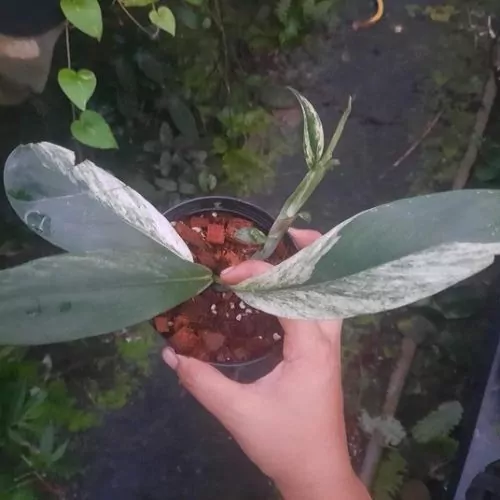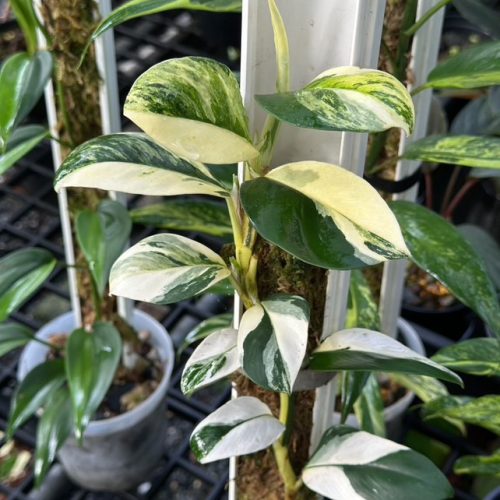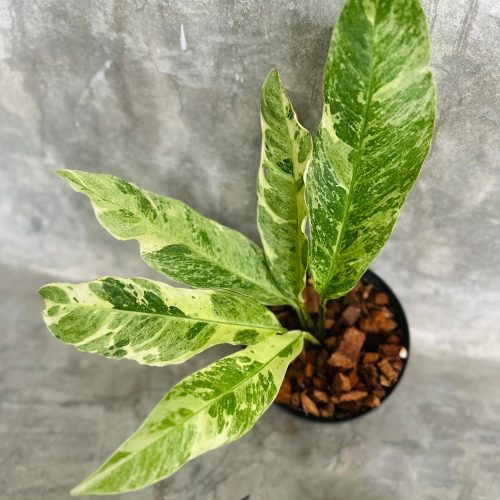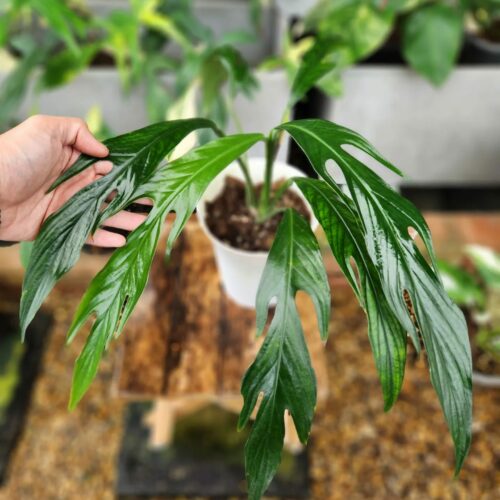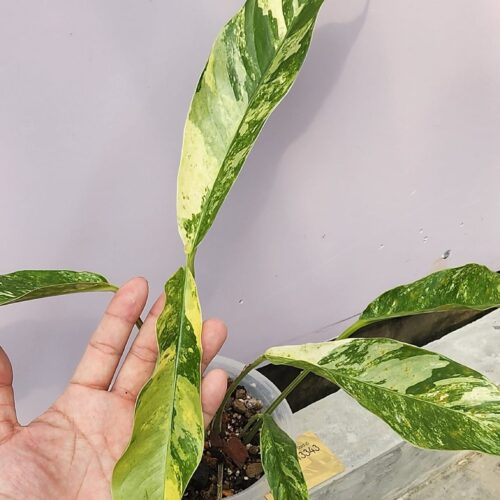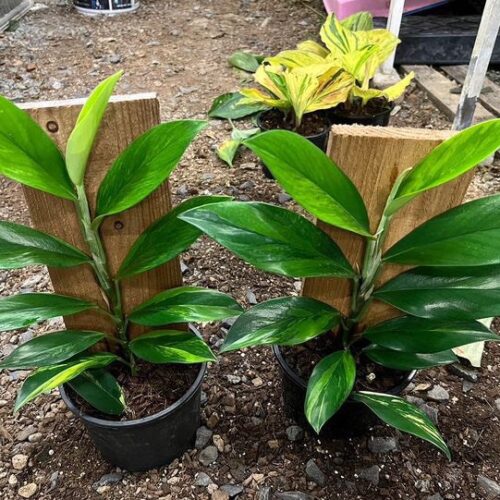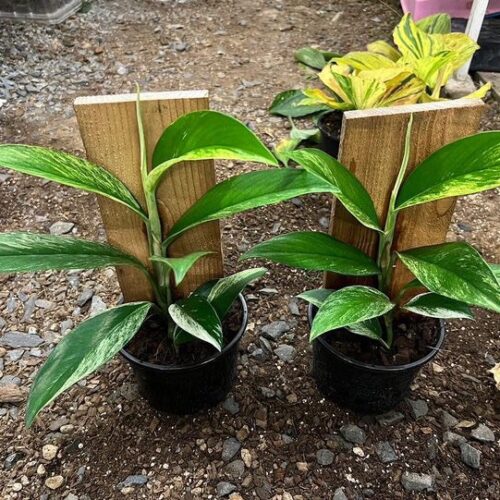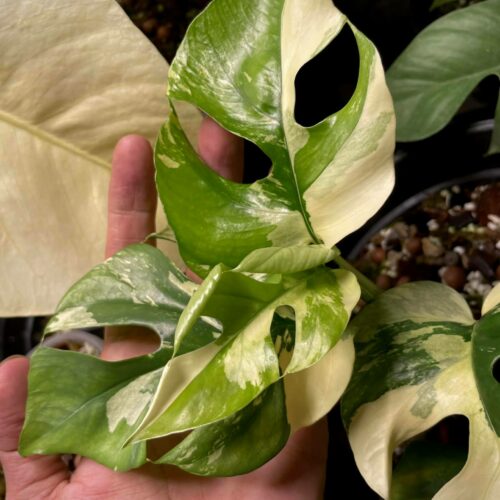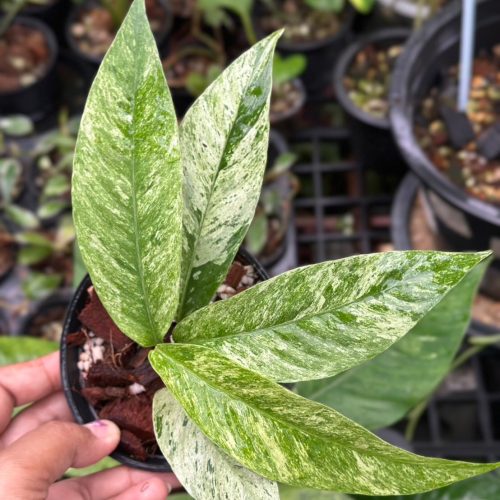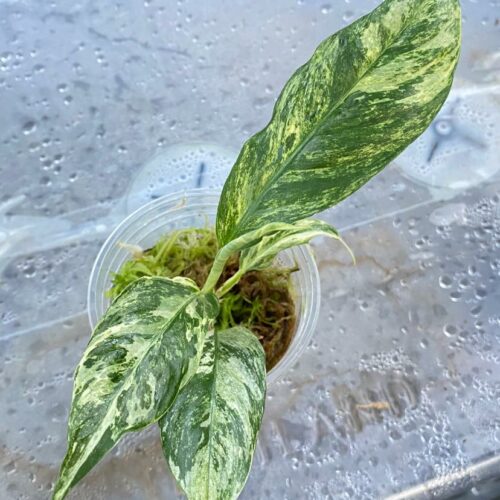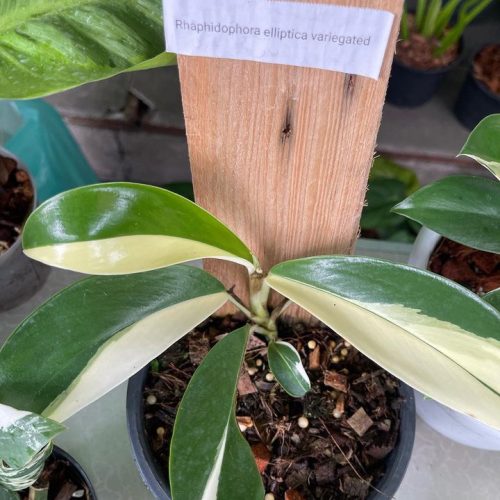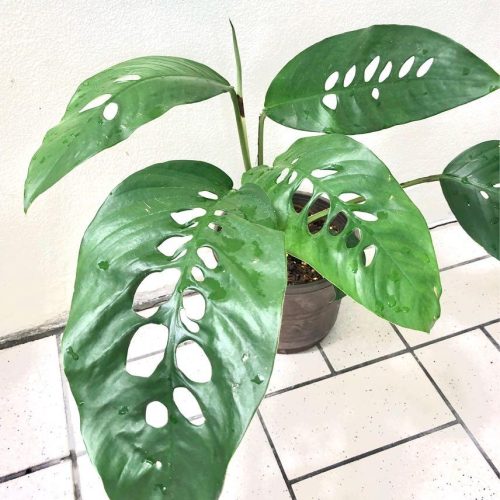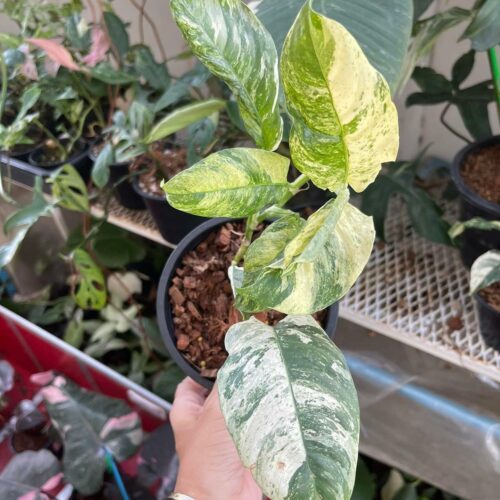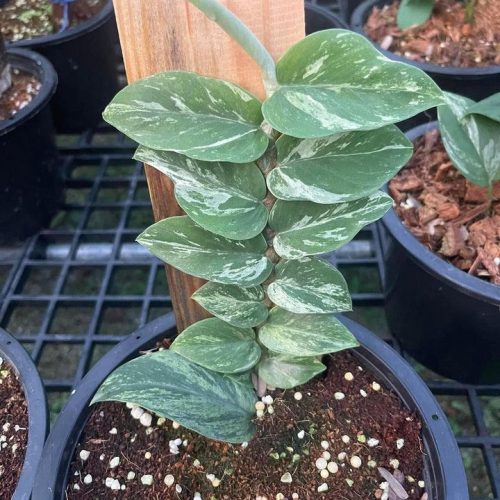Rhaphidophora is a genus of climbing aroids native to tropical regions of Africa, Asia, Australia, and the Pacific Islands. There are over 100 species in this genus, characterized by their vining growth habit and elongated, heart-shaped leaves with wavy margins. Many rhaphidophora species are popular ornamental plants cultivated for their attractive foliage.

Overview and Key Characteristics
Rhaphidophora are monoecious vines, meaning individual plants bear both male and female flowers. They climb by means of aerial roots which cling to surfaces. The leaves are alternate, simple, and have a leathery texture with distinct veins.
Growth Form
As noted above, rhaphidophora display a vining growth habit. They use aerial roots to cling and climb up trees and other structures in their native habitat. Indoors, they must be provided with moss poles, trellises, or other supporting structures to climb. Without support, the stems will trail along the ground.
Leaves
The leaves of rhaphidophora vary somewhat between species but tend to be elongated ovals or arrowheads in shape. Theyemerge initially as a reddish color then mature to shades of green, often with variegated patterns of lighter and darker green. The leaf margins are distinctly ruffled or wavy.
Popular Houseplant Species
There are several rhaphidophora species commonly grown as houseplants. Some of the most popular include:
Rhaphidophora tetrasperma
Also known as Mini Monstera, Rhaphidophora tetrasperma is prized for resembling the iconic split-leaf Monstera deliciosa in miniature form. The leaves are more elongated and have deeper splits (fenestrations) compared to other rhaphidophoras. It remains relatively compact, making it an excellent choice for small spaces.
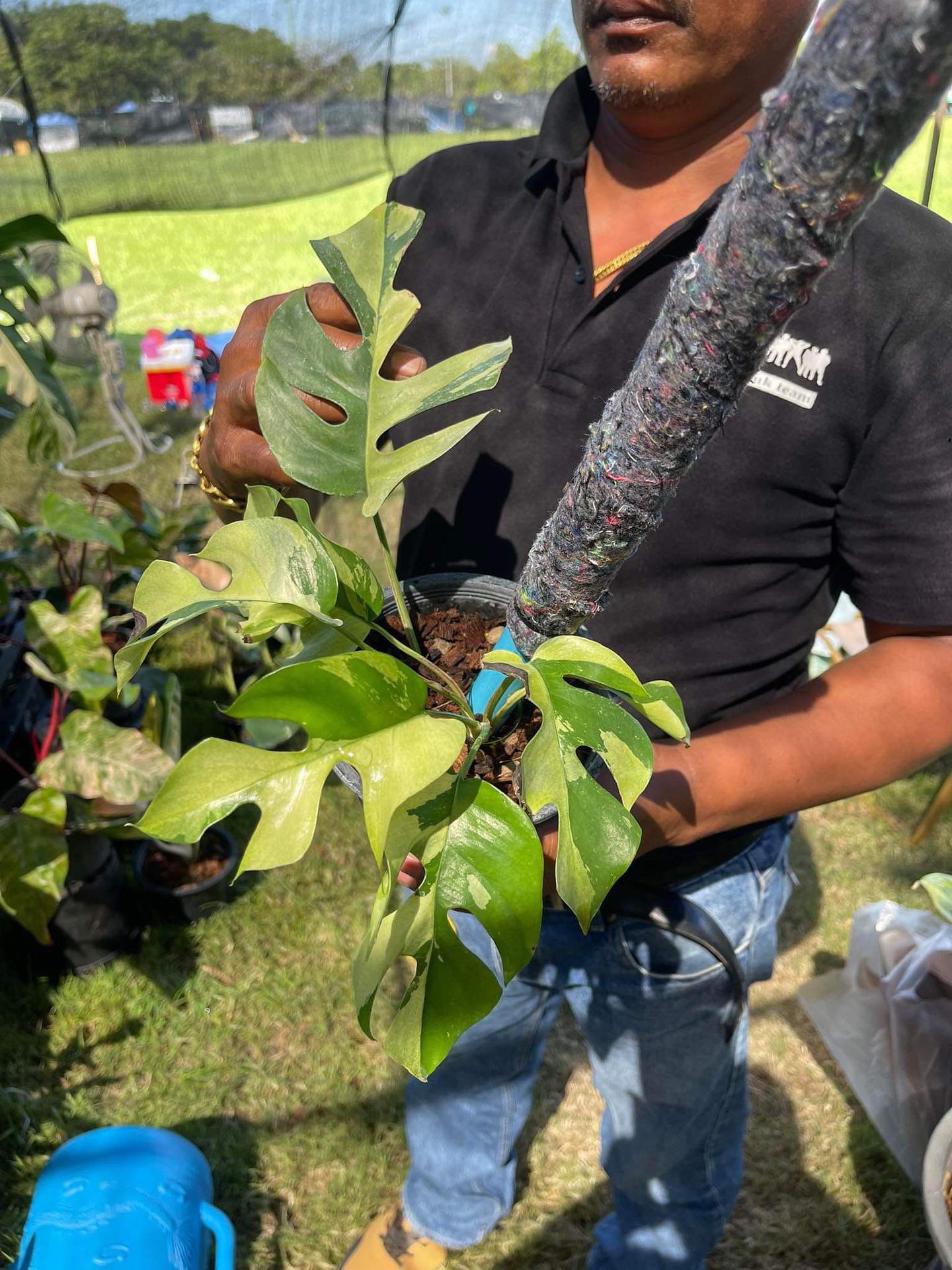
A compilation of the Rhaphidophora species that are in high demand in 2023
Rhaphidophora pinnata
Rhaphidophora pinnata, or climbing philodendron, has very large, dramatic lobed leaves emerging in a reddish color and maturing to a deep green. It can grow quite extensive when provided proper support, with leaves up to 3 feet long on mature specimens.

Rhaphidophora decursiva
Rhaphidophora decursiva is often called dragon tail plant for its tapering, spear-shaped leaves with wavy, ruffled margins. It is a quick grower but manages an orderly appearance when given support for the vining stems. The leaves emerge coppery then mature to green.
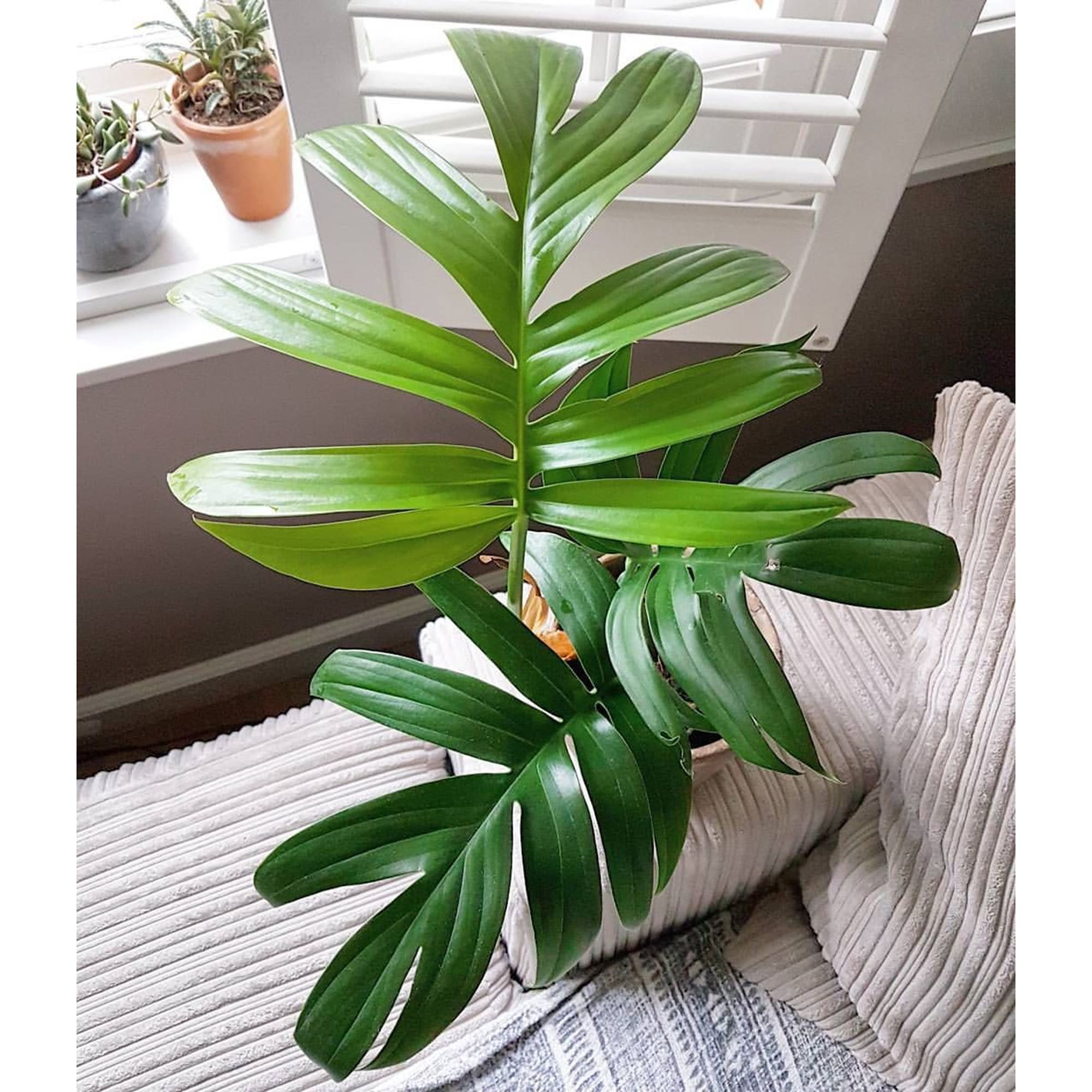
Rhaphidophora cryptantha
Also called shingling rhaphidophora, Rhaphidophora cryptantha has smaller oval leaves that emerge in red then turn green as they mature. When provided with support, the stems grow vertically, but otherwise, they will creep along the soil surface. The compact size makes it suitable for terrariums.
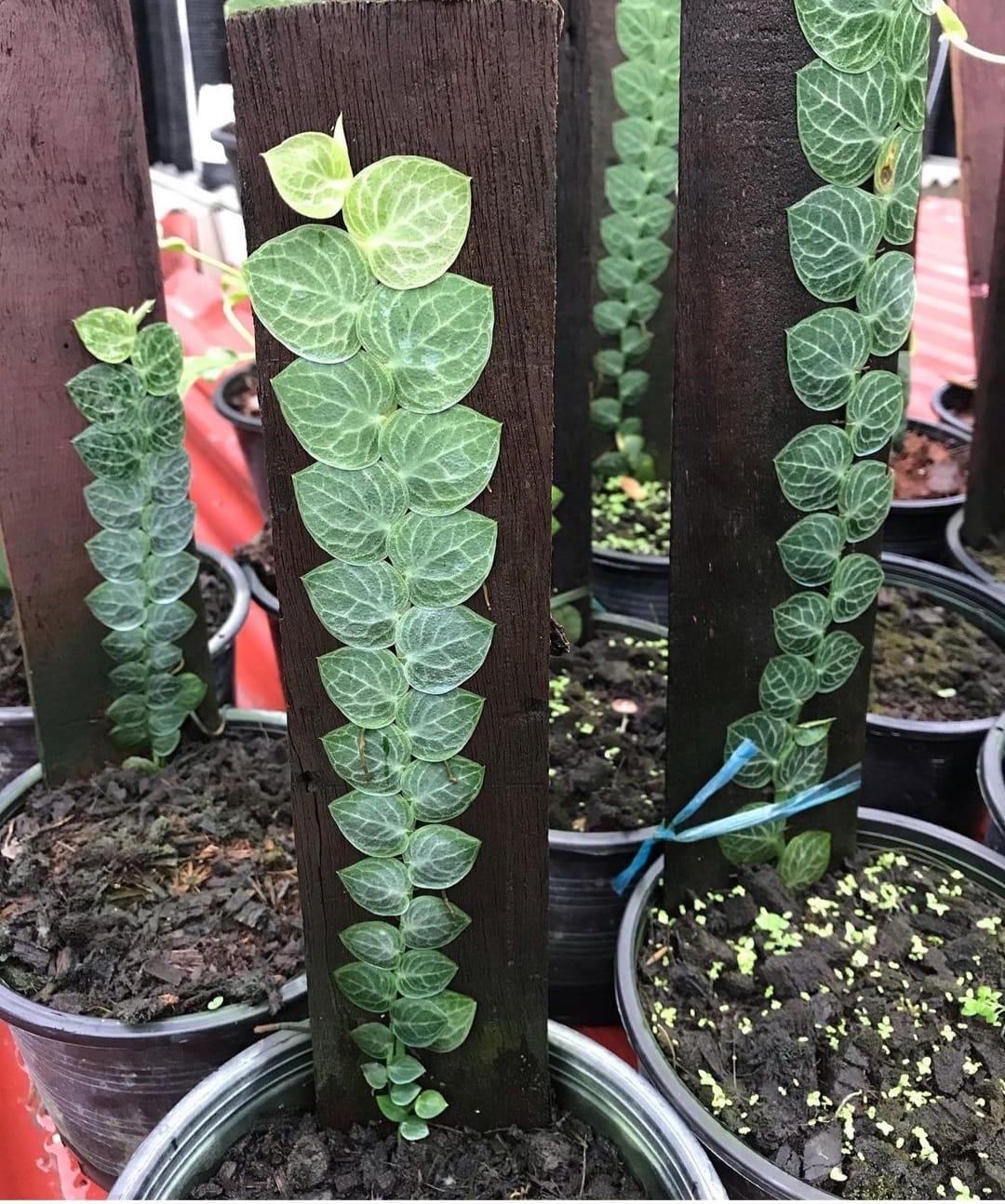
Where to buy Rhaphidophoras? Benefits from importing plants from Thailand
- Shipping: Door to door shipping, fast and safe with Dragon Courier
- Biodiversity: Thailand is known for its rich biodiversity, including a wide variety of aroid species. This diversity allows importers to access a broad range of unique and exotic aroid plants.
- Quality and Health of Plants: The suitable climate helps the plants grown here stay healthy and of high quality.
- Cost-Effectiveness: Due to favorable growing conditions and efficient production methods, Thai aroid plants can often be more cost-effective compared to those from other countries.
- Access to Hybrid Varieties: Thai growers are often involved in the development of new hybrid aroid varieties, offering unique plants that may not be available from other sources.
Rhaphidophoras species are the most sought after by aroid plant lovers
Propagation
Rhaphidophoras can be propagated by either stem tip cuttings or by dividing at the root.
Stem Cuttings
Cuttings should be taken from mature, healthy stems with at least two leaf nodes. Remove lower leaves and place in water or moist propagation mix until roots develop. Once rooted, pot up in a peat-based aroid mix. Keep newly propagated plants warm and humid while establishing.
Division
Mature rhaphidophora plants will often develop multiple vines emerging from the soil surface from a common root mass. Carefully divide rooted sections apart, being sure at least 3-5 leaves remain on each new plant. Allow cuts to callous before repotting separately. Keep humidity high while plants recover from division.
Growth Conditions
As tropical plants, rhaphidophoras require warm temperatures, high humidity, and moist soil to thrive. Replicate these conditions as closely as possible when growing them indoors.
Light
Rhaphidophoras prefer bright, indirect light. A south or west-facing window works well. Provide shade if direct sun exposure occurs for more than a couple hours per day, which can scorch leaves. Supplemental grow lights may be needed for low-light situations.
Temperature & Humidity
Daytime temperatures of 65-85°F are ideal for rhaphidophora. Nighttime lows should remain above 60°F. High humidity, 60% or greater, is also essential. Use a humidifier or place pots on pebble trays to increase moisture in the air if needed.
Water & Soil
Use a well-draining aroid mix and water whenever the top inch becomes dry. Take care not to overwater, as soggy soil will cause root rot. Allow the soil to partially dry out between waterings. Fertilize monthly during the growing season with a balanced houseplant formula diluted to half strength.
Common Pests & Diseases
Rhaphidophora are susceptible to insect infestations like spider mites, mealybugs, and scale if not cared for properly. Prevent issues by maintaining vigor through correct water, light, temperature, and humidity. Quarantine new plants and treat pest infestations early. Overwatering frequently leads to diseases like bacterial leaf spot, root rot, and botrytis blight. Allow soil to dry adequately between waterings.
Conclusion
With over 100 described species, the rhaphidophora genus encompasses a wide range of climbing aroids grown for their distinctively lobed, wavy-margined foliage. They make excellent houseplants for their tropical vining habit andtolerance for the warmer, more humid conditions found in many homes. Their propagation is straightforward both from stem cuttings and by dividing rooted sections. Given adequate moisture, humidity,warmth, and filtered sunlight, rhaphidophoras will thrive indoorsfor years. Their versatility and exotic appearance continue to fuel their popularity as unique architectural statement plants.
- What is Species Rhaphidophora?
- Species Rhaphidophora refers to a diverse genus of tropical plants belonging to the Araceae family. These plants are known for their unique foliage and are often cultivated as ornamental houseplants.
- How do I care for Species Rhaphidophora plants?
- Caring for Species Rhaphidophora plants typically involves providing them with bright, indirect light, well-draining soil, regular watering, and occasional fertilization. It’s essential to maintain proper humidity levels and provide support for climbing varieties.
- What are some common species of Rhaphidophora?
- Some popular species of Rhaphidophora include Rhaphidophora tetrasperma (Mini Monstera), Rhaphidophora decursiva (Dragon Tail Plant), and Rhaphidophora cryptantha, each known for their distinctive leaf shapes and growth habits.
- Are Species Rhaphidophora plants safe for pets?
- While Species Rhaphidophora plants are generally considered non-toxic to humans, they can be mildly toxic to pets if ingested. It’s advisable to keep them out of reach of curious animals and monitor your pets around these plants.
- How do I propagate Species Rhaphidophora?
- Propagating Rhaphidophora plants can be done through stem cuttings. Simply cut a healthy stem section with a few nodes, allow it to callus, and then place it in a pot with suitable soil. Keep the soil consistently moist until the new plant establishes roots.
See more Discover the Fascinating World of Rhaphidophora Varieties

